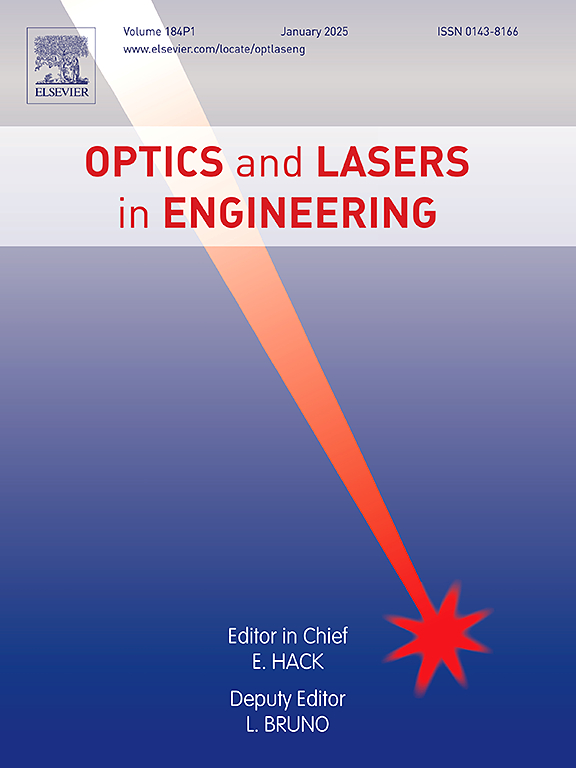飞秒激光平面刻字熔覆光栅用于矢量曲率传感
IF 3.7
2区 工程技术
Q2 OPTICS
引用次数: 0
摘要
我们提出并演示了一种紧凑、简单的全光纤一维矢量曲率传感器,该传感器基于在单模光纤(SMF)芯旁写入包层光纤布拉格光栅(CLFBG)。使用飞秒(fs)激光器,采用逐平面(Pl-b-Pl)方法写入CLFBG。光纤激光器诱导的折射率调制区(RIM)大小与光纤芯相似,提高了CLFBG的耦合效率。CLFBG反射光谱的波长和强度随光纤弯曲度和方向的变化而变化。通过结合CLFBG的波长和强度响应,可以同时测量曲率的大小和方向。实验结果表明,该传感器的最大波长灵敏度为81.6 pm/cm-1,最大强度灵敏度为-2.20 dB/m-1。这种结构在结构健康监测、机器人运动、生物医学和生物力学领域具有重要的应用潜力。本文章由计算机程序翻译,如有差异,请以英文原文为准。
Cladding gratings fabricated using femtosecond laser plane by plane inscription for vectorial curvature sensing
We present and demonstrate a compact and simple all-fiber one-dimensional vector curvature sensor based on writing a cladding fiber Bragg grating (CLFBG) next to the core of a single-mode fiber (SMF). The CLFBG is written using a femtosecond (fs) laser with a plane-by-plane (Pl-b-Pl) method. The refractive index modulation region (RIM) induced by the fs laser is similar in size to the fiber core, increasing the coupling efficiency of the CLFBG. The reflection spectrum of CLFBG changes in terms of wavelength and intensity based on the curvature and direction of the fiber bend. By combining the wavelength and intensity responses of CLFBG, it is possible to simultaneously measure the magnitude and direction of the curvature. Experimental results show that the sensor has a maximum wavelength sensitivity of 81.6 pm/cm-1 and a maximum intensity sensitivity of -2.20 dB/m-1 This structure holds significant potential for applications in structural health monitoring, robotic movement, biomedical, and biomechanical fields.
求助全文
通过发布文献求助,成功后即可免费获取论文全文。
去求助
来源期刊

Optics and Lasers in Engineering
工程技术-光学
CiteScore
8.90
自引率
8.70%
发文量
384
审稿时长
42 days
期刊介绍:
Optics and Lasers in Engineering aims at providing an international forum for the interchange of information on the development of optical techniques and laser technology in engineering. Emphasis is placed on contributions targeted at the practical use of methods and devices, the development and enhancement of solutions and new theoretical concepts for experimental methods.
Optics and Lasers in Engineering reflects the main areas in which optical methods are being used and developed for an engineering environment. Manuscripts should offer clear evidence of novelty and significance. Papers focusing on parameter optimization or computational issues are not suitable. Similarly, papers focussed on an application rather than the optical method fall outside the journal''s scope. The scope of the journal is defined to include the following:
-Optical Metrology-
Optical Methods for 3D visualization and virtual engineering-
Optical Techniques for Microsystems-
Imaging, Microscopy and Adaptive Optics-
Computational Imaging-
Laser methods in manufacturing-
Integrated optical and photonic sensors-
Optics and Photonics in Life Science-
Hyperspectral and spectroscopic methods-
Infrared and Terahertz techniques
 求助内容:
求助内容: 应助结果提醒方式:
应助结果提醒方式:


